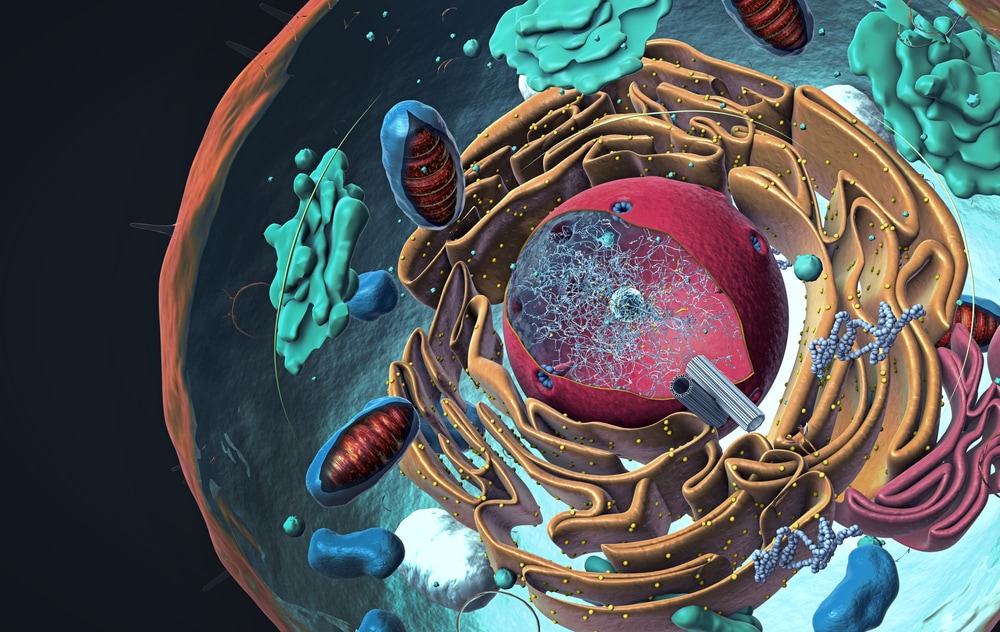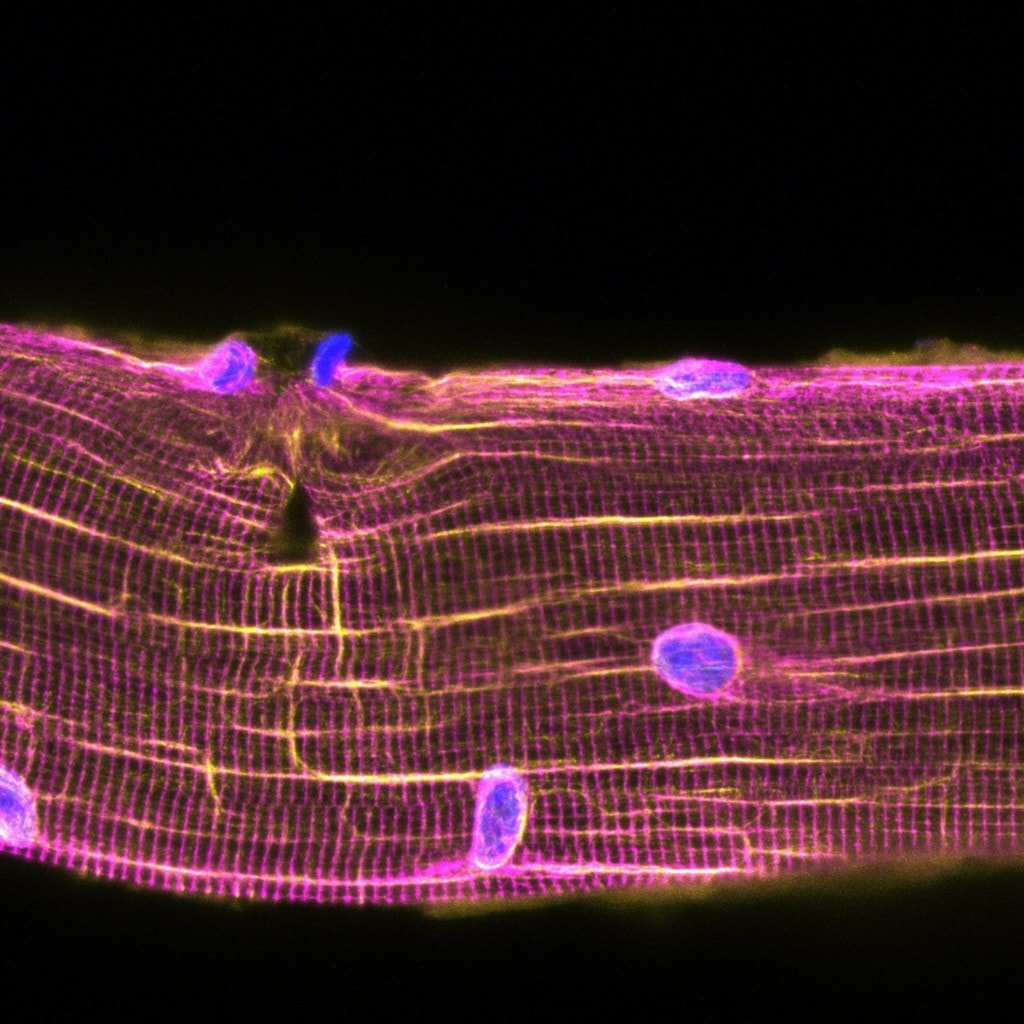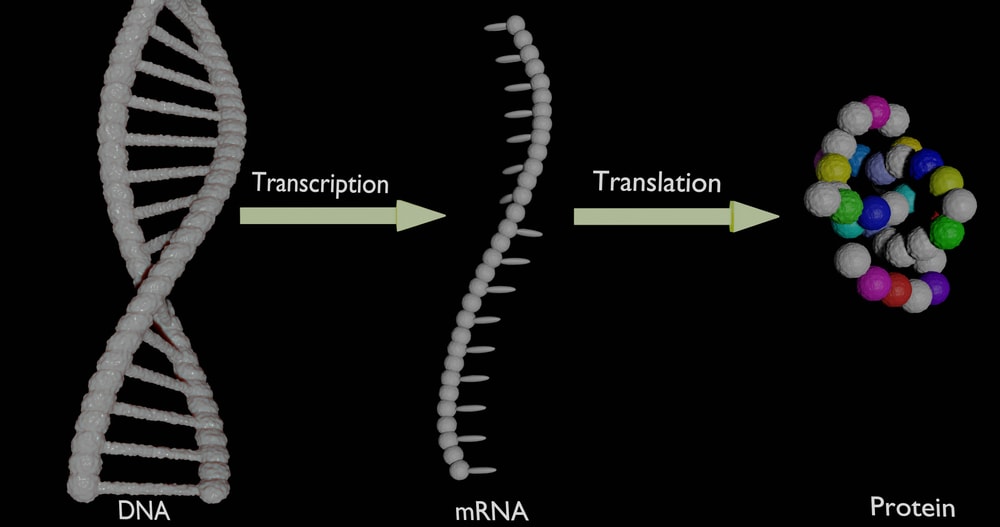Muscles Use Travelling Nuclei to Repair Themselves
If you hit the gym or increase your cardio dramatically, you should want to know how muscle repair works. While we have a good idea of how that works using muscle stem cells, now new research shows how muscles do this using their nuclei. Let’s dig in.
What Is a Nucleus?

Credit: Shutterstock
The nucleus is the control center of the cell (looks like a walnut in the above picture). The nucleus controls and regulates the activities of the cell and carries the DNA. However, it’s not something you think would be involved in the repair of muscles.
What We Know About Muscle Repair

We know that your muscles have stem cells called “satellite cells”. These live in your muscle and when a muscle cell is damaged, like through a workout, one of these steps in and differentiates into a new muscle cell. If these cells are depleted, then bone marrow stem cells can step in for a satellite cell. That’s a quick summary of what we knew about muscle repair, until now.
Is the Moving Nucleus Involved in Muscle Repair?

Credit: William Roman, iMM.
In the new study, researchers in Spain had mice and humans exercise and observed how muscle repair happened (1). They identified a new mechanism that bypassed stem cells whereby the injury site attracted the nuclei living in the muscles. The nuclei migrated using some of that contractile machinery that allows muscles to generate force. Once there, the nuclei delivered mRNA which orchestrated the muscle repair.
For example, in the image above from the new research, you can see muscle damage in the top left. The nuclei are stained blue and two are seen in the vicinity of the tear. Additional research tools showed that those nuclei were releasing specific strands of mRNA at specific times which coded for the required growth factor proteins needed to stimulate repair.
What is mRNA?

Credit: Shutterstock
The world has now heard about mRNA because of the Pfizer and Moderna COVID vaccines. mRNA is how your body makes new proteins. An mRNA strand is made from the DNA and once manufactured is transported to the ribosome of the cells, which is a protein factory. Once there, the mRNA strand is “read” and a protein is made.
Why Is All of This Important?
While our concept of muscle repair in regenerative medicine has been all about how to either stimulate or replace satellite cells, it also now needs to focus on what stimulates nuclei to get to the site of damage. For example, how does PRP impact this newly discovered muscle repair mechanism? For example, in general, we know that muscle repair in animal models is stimulated by PRP (2). Is the PRP stimulating this repair machinery or just satellite cells?
The upshot? It’s amazing that we’re still learning something that’s totally new about how the body works just about every month. In this case, that muscle repair happens through more than stem cells, and that the nuclei, once thought to be a stationary command and control center are actually mobile repair kits for muscle!
___________________________________
References:
(1) Roman W, Pinheiro H, Pimentel MR, Segalés J, Oliveira LM, García-Domínguez E, Gómez-Cabrera MC, Serrano AL, Gomes ER, Muñoz-Cánoves P. Muscle repair after physiological damage relies on nuclear migration for cellular reconstruction. Science. 2021 Oct 15;374(6565):355-359. doi: 10.1126/science.abe5620. Epub 2021 Oct 14. PMID: 34648328.
(2) Hammond JW, Hinton RY, Curl LA, Muriel JM, Lovering RM. Use of autologous platelet-rich plasma to treat muscle strain injuries. Am J Sports Med. 2009 Jun;37(6):1135-42. doi: 10.1177/0363546508330974. Epub 2009 Mar 12. PMID: 19282509; PMCID: PMC3523111.

NOTE: This blog post provides general information to help the reader better understand regenerative medicine, musculoskeletal health, and related subjects. All content provided in this blog, website, or any linked materials, including text, graphics, images, patient profiles, outcomes, and information, are not intended and should not be considered or used as a substitute for medical advice, diagnosis, or treatment. Please always consult with a professional and certified healthcare provider to discuss if a treatment is right for you.
